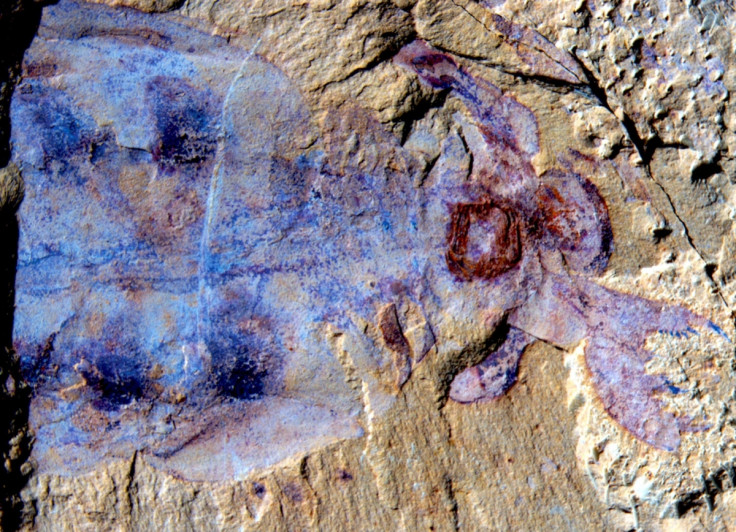520 Million-Year-Old Fossilised Brain of World's First Predator 'Sea Monster' Discovered in China

Scientists have unearthed the well-preserved brain of a sea monster which existed in the Lower Cambrian around 520 million years ago.
The creature, dubbed Lyrarapax unguispinus, is believed to be one of the very first predators of its day and was discovered at a site in Yunnan, south-west China.
It was identified as a new member of a group of animals called the anomalocaridads, meaning "abnormal shrimps", which were the top predators of the Cambrian seas.
The shrimplike animal, which could grow to be six feet long, sported body armour, spiked claws for hunting prey and had compound eyes, with a cone-shaped mouth made of concentric plates.
The nervous system and other parts of the brain are clearly defined in the extraordinary fossil, although researchers suggest the creature's brain was no more complex than those of tiny velvet worms living in jungles of the southern hemisphere.
"The top predator of the Cambrian had a brain that was much less complex than that of some of its possible prey and that looked surprisingly similar to a modern group of rather modest worm-like animals," lead-author Nicholas Strausfeld, of the University of Arizona's centre for insect science, told the Guardian.
Before the Cambrian Period, which lasted between 543 million and 493 million years ago, most life resembled simple algae and stationary jellyfishlike creatures.
Yet during the Cambrian explosion, a period of rapid evolution which brought along most major animal phyla, swimming sea creatures with jointed legs and hard exoskeletons emerged.
According to the co-author of the study, Peiyun Cong, a researcher at Yunnan University, most anomalocaridid specimens discovered previously have been poorly preserved which makes it difficult to establish information about the creatures.
Some scientists believed anomalocaridids belonged to a group that split off before the most recent common ancestor of all living arthropods, while others thought the animals were part of a group called chelicerates that includes spiders and scorpions.
According to Cong, however, others thought anomalocaridids had converged upon similar features to those of modern arthropods but did not evolve from the same lineage.
Yet in the last few years researchers unearthed three well-preserved specimens of a new species of anomalocaridid frozen in fossil sediments in China. The nervous systems, guts and muscles were visible.
"The three known specimens may represent immature stages of the animal, so it might be larger," Cong told Live Science.
Cong added that the brain of L. unguispinus likely shared similarities with velvet worms, known as onychophorans.
Co-author Gregory Edgecombe, of the Natural History Museum, told Science 2.0: "For the first time, we didn't have to rely just on the external form of the appendages and their sequence in the head to try and sort out segmental identities, but we can draw on the same tool kit we use for extant arthropods – the brain."
By the end of the Paleozoic Era, around 251 million years ago, the anomalocaridids were extinct.
The research was published in the journal Nature.
© Copyright IBTimes 2025. All rights reserved.






















